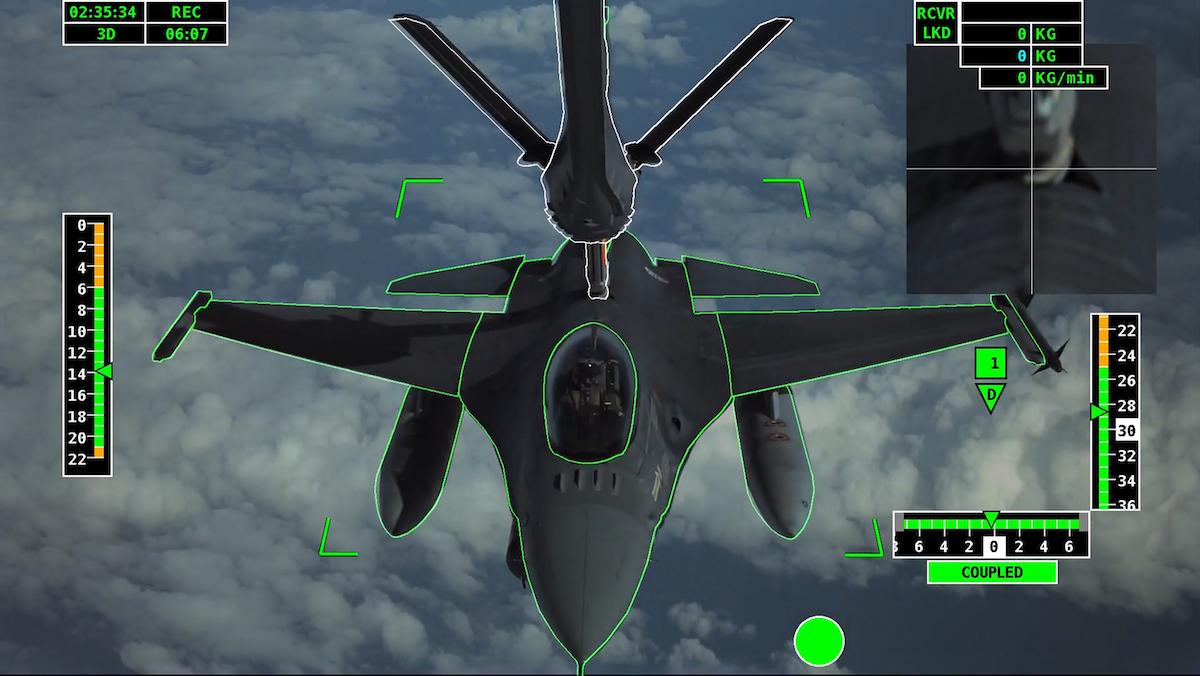
MADRID—Airbus is to begin exploring more autonomous aerial refueling capability through its UpNext technology accelerator.
Flight testing in the Auto’Mate project, UpNext’s first defense research project, will see a DT-25 target drone flying in close formation with Airbus’ A310 multi-role tanker transport (MRTT) demonstrator aircraft during mid-2023.
The aim is to move toward what Airbus calls Autonomous Assets Air-to-Air Refueling (A4R), building on the company’s experience in developing an Automatic Air-to-Air Refueling (A3R) system for its A330 MRTT, which was certified for daylight operation during the summer. The A3R system was developed in collaboration with the Singaporean Air Force.
“A4R is about gaining more autonomy in order to have more operational safety, greater reliability and more efficiency in aerial refueling,” Manuel Barriopedro, the head of Airbus’ autonomous air-to-air refueling demonstrator project, told journalists here Dec. 12.
The trials will explore uncrewed air system control from the A310 using different communications technologies, as well as artificial intelligence for control and high-precision satellite navigation for positioning. There are no plans to refuel the drones from the tanker.
“This is about shaping the future of air-to-air refueling and cooperative control algorithms and help us consider future defense operations,” Barriopedro said. Among the advantages of A4R could be to reduce the size of the tanker crew, speed up the pace of refueling and enable extended-range operations of the remote carrier uncrewed air systems associated with the Future Combat Air System (FCAS) being developed by France, Germany, and Spain. Alternatively, it could enable tankers to take a greater role as a control node in the aerial battle, a role hinted at by company executives.
Barriopedro said the aim was to fly the drone as close as possible to the A310.
Joining the DT-25 will be a further five simulated drones as part of the experiments.
“This will pave the way for A4R, UpNext as an accelerator of technologies will help use pursue this quickly and help us decide which technologies are useful and which ones are not,” Barriopedro said.
Airbus is now pursuing night-time certification for the A3R technology on the A330 and hopes to broaden the number of receivers the system is compatible with. The A3R system uses image-recognition algorithms to confirm the type of aircraft and the position of the receiver aircraft’s refueling receptacle. Once the system has determined when the receiver is in the correct pre-contact position underneath the tanker to allow refueling to take place, the boom operator can use one of two A3R modes. Semi-automatic mode positions the boom over the receptacle and the boom operator then decides whether to plug the boom into the receptacle. Fully automatic mode carries out the whole process, with oversight from the boom operator.
The A3R system can position the boom correctly in seconds, whereas a human operator generally takes much longer, Airbus aerial refueling experts suggest.
Development of the A3R and A4R systems are part of the ongoing roadmap of development for the MRTT platform, which also includes enhancing the aircraft’s self-protection capabilities and its connectivity. The self-protection capability could be important if the aircraft plays that more crucial role as a node in the FCAS system of systems.
The capabilities are emerging as more countries eye the potential of the MRTT. Airbus now has 66 firm orders for MRTTs from 14 nations. While many of these are conversions from new-build, green A330-200 airframes, air forces are increasingly buying second-hand airframes from commercial airlines. During Aerospace DAILY’s visit to Airbus’ Getafe conversion line, the company was converting the first of three ex-Iberia A330s for the Spanish Air Force and one green airframe for the French Air Force, its 12th aircraft. Fifty-four aircraft have been delivered and the company believes there is a potential market for up to 90 MRTTs, not including the U.S. Other potential customers include Brazil, which has purchased A330 airframes ready for conversion to MRTT configuration but has not yet signed a contract. Another is Turkey, which wishes to replace its aging Boeing KC-135Rs. Canada is also in the frame as it wants to replace its older A310 MRTTs with a new platform. Ottawa has only shortlisted Airbus to provide tanker aircraft.
Airbus officials remain hopeful that they will get the chance to compete the aircraft again in the U.S. through the potential KC-Y tanker program known as Bridge Tanker, offering the MRTT in conjunction with Lockheed Martin. A decision about whether KC-Y will be a competition is expected in the coming months.
